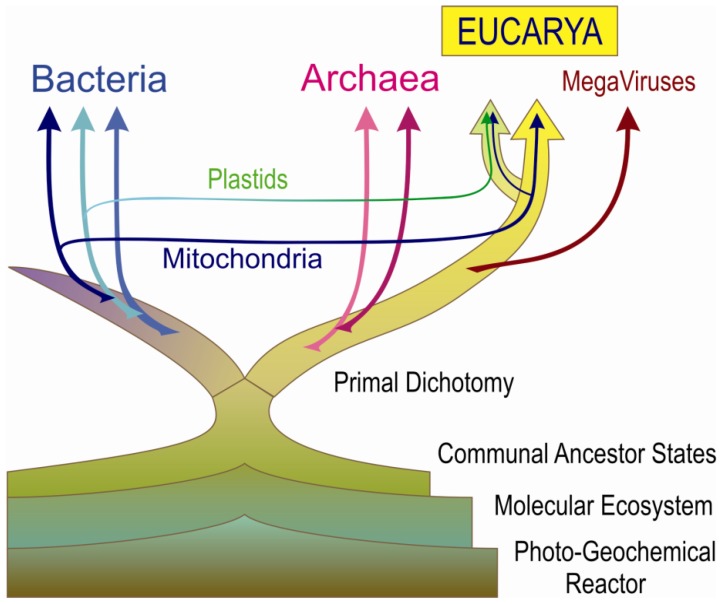Figure 1.
Recasting the early phylogenetic tree of life. The diagram emphasizes an unbroken chain of communal evolution from photo-geochemical reactors and organic molecular ecosystems to complex eukaryotic macro-cells. From the common matrix of communal ancestor states (here conceived as syncytial-like super-cells), prokaryotic micro-cells and acellular viral lineages "escaped" multiple times, as based on partly overlapping sampling of unified genomes from a highly redundant communal gene pool and subsequent clonal propagation. The primal dichotomy between bacterial and archaeal/protoeukaryotic stemlines occurred at the level of communal ancestors. All the composite modern eukaryotes descend from an ancestor that had already adopted some fairly advanced bacteria as permanently integrated mitochondrial endosymbionts. Similarly, cyanobacterial endosymbionts were acquired as plastids by the diverging lineage of green plants.

